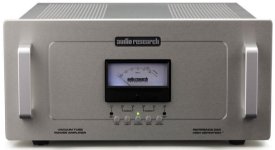The ARC Ref 75 lets you bias each tube individually. ARC amps have varied over the years on how easy or hard they are to bias. I think the D-79 and the Ref 75 are among the easiest to bias because of the built in meters. I would give the nod to the D-79 over the Ref 75 in terms of how easy it is to bias because on the D-79, it was much easier to reach the bias pot from the front panel. The Ref 75 requires a little 'fishing' with the yellow bias tool that comes with the amp in order to land on the bias adjustment screw.
The absolute worst tube amp I ever owned in terms of craziness to set the bias was the Jadis Defy 7 MKII. One bias pot for each bank of 3 tubes and you have to take a reading from each tube and then average those readings and adjust the bias accordinginly with the single pot in order to be in the proper bias range. Each tweak of the bias pot requires you to retake the bias measurement for each tube. You can quickly tell how well matched (or not) your tubes are. Oh, and did I mention that you have to flip the 100 lb amp on its side, remove the bottom cover, be handy with a DVM and have your dickers around HV in order to take the readings and make the adjustments?
And now go back and take a look at companies like Marantz who were making tube amps back in the 1950s with built in meters and easy bias adjustments from the top panel. Look at pictures of the old Model 2, Model 5, Model 8, and 8B. The Model 9 was arguably their most sexy looking power amp and was the first time a Marantz power amp sported a face plate with their cool looking bias meters mounted in the front.

